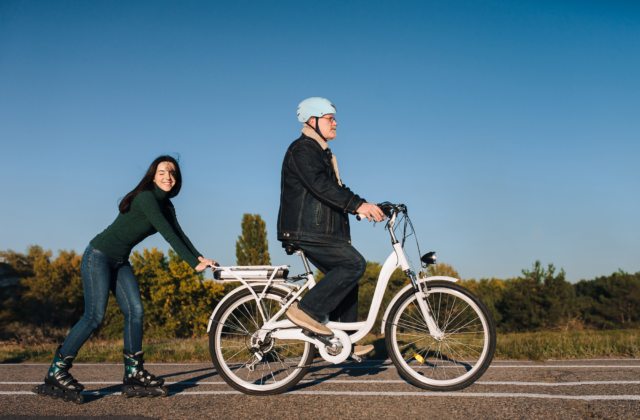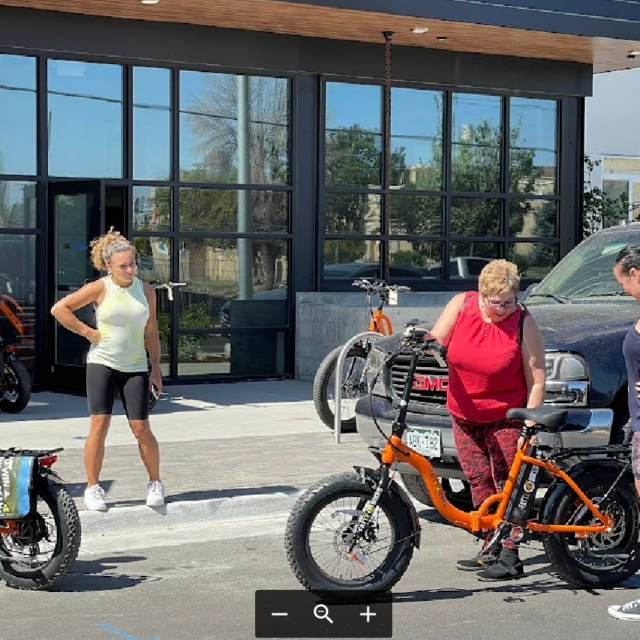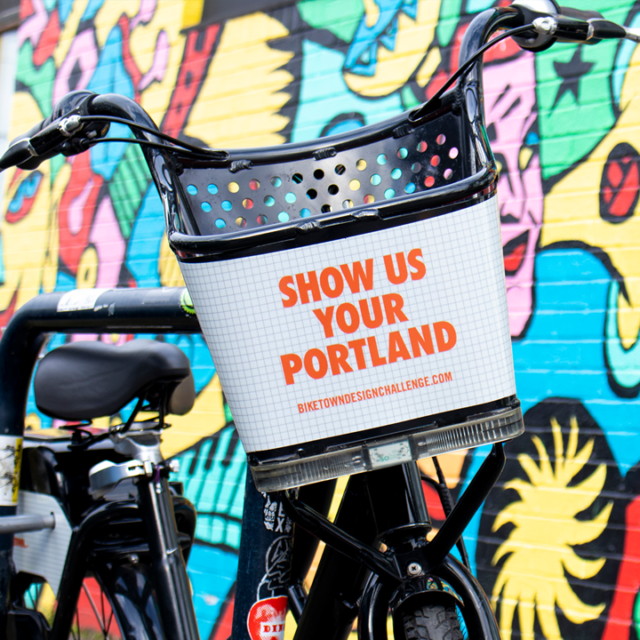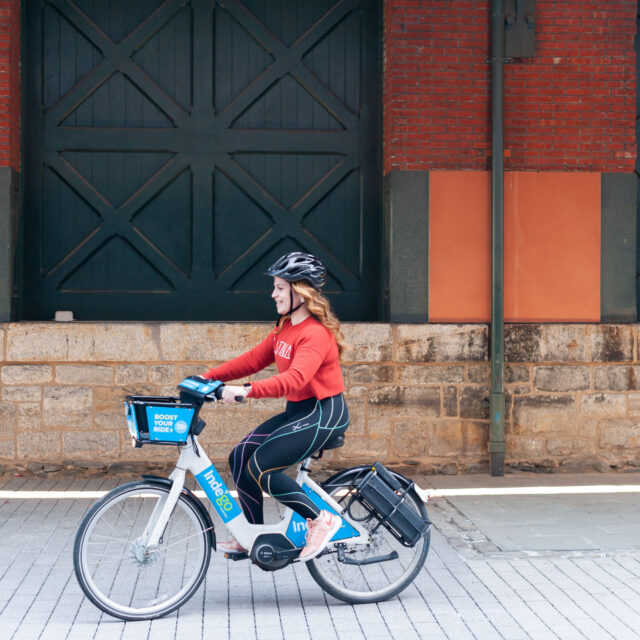The Health Benefits of Electric Bikes
by Kiran Herbert, Communications Manager
April 29, 2022
E-bikes are fun, but do they still offer exercise? We surveyed the available data to find out.

There’s no question that electric bikes are soaring in popularity, or that sales will continue to rise (especially as gas prices do, too). The one demographic that seems more hesitant to embrace the e-bike boom, however, is avid cyclists and other fitness enthusiasts. To those more drawn to “type II fun,” an e-bike — with its pedal-powered battery offering riders a boost — can feel like cheating, a way around hard climbs and the stamina required for a traditional 20-mile ride.
But the beauty of e-bikes lies in the fact that they’re more inclusive, allowing people of all ages and fitness levels to enjoy bicycling. While more expensive than your average bike, there is a slew of electric bicycle incentive programs aimed at low-income individuals, a growing list of e-bike lending libraries, and an increasing number of bike share systems going all-electric. Plus, because of the ease associated with using them, electric bikes are also more likely to replace car trips (a recent study found car owners who also own an e-bike used the bike to replace about half the miles they usually traveled by car).
People love e-bikes for the very reason their detractors don’t: the bike’s motor and rechargeable battery carry the brunt of the hard work.
According to Chris Cherry, a professor of civil and environmental engineering at the University of Tennessee who studies e-bike use, a battery-powered bike can help bridge the gap and bring non-cyclists into the fold. “The most powerful thing that e-bikes do is that they take the most painful parts of bike riding away,” says Cherry. “Either the climb or the duration — the stuff that keeps people from starting.”
Because electric bikes are less physically demanding on joints and muscles, they not only bring in riders who might otherwise be inactive, but they also offer the opportunity for people to ride longer periods of time and go greater distances. That leads to more folks using e-bikes as an option for commuting or running errands. Although users won’t find themselves doing the sort of vigorous physical activity uphill mountain biking or even hot yoga entails, e-bike use has been shown to deliver the sort of moderate physical activity most doctors recommend.
While Cherry isn’t an exercise scientist, he did partner with several on a 2017 study that found e-bikes provide moderate physical activity on flat segments and downhill segments and vigorous physical activity on uphill segments. Notably, that same study found that compared to traditional bikes and walking, e-bikes lower a person’s need to shower after riding, allow riders to dress appropriately for the weather, require less exertion, and elicit higher levels of enjoyment.
“If you’re only using your bike when you feel energized versus all the time — as e-bike users tend to — then you’re not doing yourself any favors,” says Cherry. “Research says people ride e-bikes more often and farther, so they get more physical activity, even though it’s less intense.”
A 2019 study found that e-bikes can provide intense exercise, it just doesn’t feel like a workout. Another 2021 study came to roughly the same conclusion: Electric bicycling can definitely count as exercise. Those researchers, who compared the physiological effects of e-bikes and standard road bikes during a simulated commute, determined that the e-bike riders elevated their breathing and heart rates enough to count as a meaningful workout. However, those health benefits varied from person to person.
When on a Class 2 e-bike — which includes a throttle and a max speed of 20 miles per hour — a person could theoretically not pedal at all, burning through their battery power using it like a motorcycle. Obviously, to obtain a health benefit, one has to actually pedal the bike. Similarly, if you’re always using the maximum amount of pedal assist, you’ll get less exercise than someone who’s more conservative. In the 2021 study, some participants that used the highest level of pedal assistance were found to get moderate exercise while others’ heart rate response was too mild to count (rider height and weight can also play an important role in the number of calories burned).
Across the board, the e-bike users burned about 30% fewer calories than those on road bikes but as with the participants in Cherry’s study, they reported having more fun. Other studies echo this sentiment, with many driving home the point that when bicycling is made easier and more enjoyable, courtesy of pedal assist, it’s more likely to become a part of people’s everyday lifestyle.
While the mental health benefits of e-biking are harder to quantify, there is something to be said for a form of transportation that provides joy, allowing more people to better connect to the places they live. There’s plenty of research that points to the mental health benefits of spending time outdoors, including one 2019 study that links 120 hours spent outside per week with elevated levels of health and well-being. Plus, physical activity, in general, has been shown to improve sleep, mood, and cognitive functioning, as well as decrease stress and ease depression and anxiety.
Based on such research, Canadian doctors can now prescribe national park visits to patients. Anna Wassman, the business development manager at Bosch eBike Systems — which manufactures e-bike batteries, motors, and displays for more than 70 brands globally — hopes to someday get to the point where doctors might also be able to prescribe e-bikes. In tandem with Cherry and others, Wassman is working to develop a long-term, large-scale scientific medical study to fill a current gap in the research. While it’s still in the conceptual stages, for there to be any sort of medical intervention, longitudinal evidence is needed.
“The adoption of e-bikes as the go-to health and wellness tool for the medical community — that’s the dream goal,” says Wassman. To help achieve that dream, Bosch believes insurance companies, benefits brokers and employers have a large role to play. “It’s lots of little pieces that all tie together to create a better world. We need to help people get there.”
For older adults, whose immune systems benefit from exercise, as well as folks with pre-existing conditions, ongoing joint pain, or injuries, e-bikes are a low-impact way to stay healthy. Again, they’re also expensive. Since socioeconomic status is a known indicator of things like hypertension, heart disease, obesity, and respiratory issues, e-bikes remain out of reach for many who would benefit most from their use.
In 2021, Biketown, the all-electric bike share system in Portland, Oregon, launched a prescribe-a-bike program to both increase access to e-bikes and improve public health. In partnership with the Multnomah County Health Department, Racial and Ethnic Approaches to Community Health (REACH) Program, and its student health centers, the two-year pilot is offering prescriptions for bike share for clinic patients and 16 and 17-year-old high school students. All prescriptions come with a free bike share membership, helmet, and educational support.
According to Roshin Kurian, transportation demand management specialist at the Portland Bureau of Transportation, which manages Biketown, the clinic and student populations live in the same zip codes, one of the best-known indicators of poor health outcomes. “These are underserved communities that are more low income than the rest of the city and more ethnically diverse,” says Kurian.
Thus far, the prescribe-a-bike program has 58 participants, all of whom agreed to have their ridership data tracked and to submit health surveys. Although prescribe-a-bike programs aren’t new — Boston, Massachusetts, and Brooklyn, New York, have their own, and the U.K. announced a nationwide initiative in July 2021 — they are rare, and haven’t traditionally involved electric pedal-assist bikes. Kurian believes that Biketown’s all-electric fleet helped not only secure the initial buy-in from participants but will ensure that folks ride more often.
“Once you get on an e-bike and you feel that pedal-assist and you’re able to go up the hill, you’re able to go further and that builds confidence,” says Kurian. “It’s a gateway drug to more activity and to better behavioral changes around your health.”
For children aged 6 through 17, the Centers for Disease Control and Prevention (CDC) recommends 60 minutes or more of moderate-to-vigorous intensity physical activity each day. For adults, it’s 150 minutes of moderate-intensity physical activity (and two days of muscle-strengthening activity) each week. Biketown’s prescriptions are in line with these guidelines, although Kurian acknowledges that for many folks, it can seem like a lot.
“It’s a recommendation, so anything that we hit near that is great,” says Kurian. “It’s also probably more realistic if you’re using an e-bike.”
By focusing on youth and clinic patients with preexisting conditions, the study will showcase how electric bikes might work as both a preventative and curative intervention. The larger public health savings brought on by a large-scale shift to e-bikes is harder to quantify. According to a 2021 study conducted by epidemiological researchers at Colorado State University, bike share alone saves the U.S. $36 million in public health dollars every year. Researchers also found that bike share trips in the U.S. provide health benefits for bicyclists and those health benefits are greater than the risks, such as air pollution or injury from cars.
Bike share systems that go electric consistently bring in more users — in 2019, when the Madison BCycle fleet in Madison, Wisconsin, went electric, usage more than doubled, and in New York City, electric-assist Citi Bikes see more than twice as many rides per day than traditional bikes. It follows that the more electric bikes there are on our streets, whatever the source, the larger the collective public health benefit. The more e-bikes swell in popularity, the more likely they are to play a role in helping reshape our streets to be more walkable and bikeable — which comes with health savings of their own.
A widespread mode shift would also reduce emissions while redesigning our streets for bikes can help lower road fatalities all around. And if a future full of electric bicycles seems far-fetched, consider this: In Europe, e-bikes are projected to outsell cars — all cars, not just electric ones — by the middle of the decade. In the U.S., e-bike sales outpaced electric car sales in 2021 and are tracking towards 1 million annually.
Electric bikes are proven to have the ability to help individuals, and getting more individuals on e-bikes has the ability to help our communities and the planet at large. The more people bicycling, in whatever capacity, the better.
The Better Bike Share Partnership is funded by The JPB Foundation as a collaboration between the City of Philadelphia, the National Association of City Transportation Officials (NACTO) and the PeopleForBikes Foundation to build equitable and replicable bike share systems. Follow us on Facebook, Twitter and Instagram or sign up for our weekly newsletter. Got a question or a story idea? Email kiran@peopleforbikes.org.



